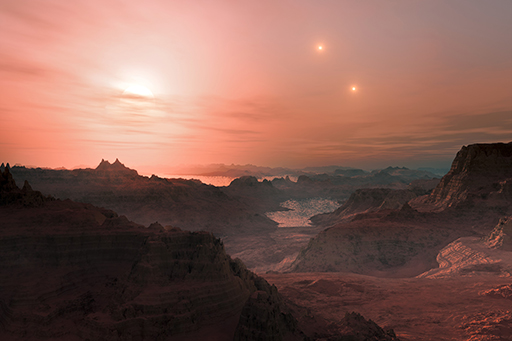8.3 Radial velocity searches for small worlds
As discussed earlier, small planets are difficult to find with radial velocity (RV) searches, just as they are with transit surveys. But looking at small stars can help with this technique too. Remember, in the see-saw example from Week 3 the star doesn’t move much because it is so much more massive than the planet. If the star is a little bit less massive, then it will wobble more for the same mass of planet.
Astronomers have been making use of this fact by searching for small planets in the RV wobbles of nearby M dwarfs, using instruments such as HARPS installed on the European Southern Observatory’s 3.6 m telescope in Chile. To date, HARPS (High Accuracy Radial velocity Planet Searcher) has found well over one hundred planets, making it the most successful ground-based planet hunter.
HARPS astronomers have assessed the likelihood of there being habitable planets around M dwarfs by observing a carefully chosen sample of such stars, some of which were found to harbour planets. They concluded that there is probably a planet with a mass lower than 10 ME in the habitable zone of about 40 per cent of such stars in the Milky Way. The logic underpinning this conclusion is similar to that used in Section 2.3, but the conclusion is based on completely different observations. The two results agree and seem to confirm that there are probably lots of Earth-like worlds out there.
Figure 12 is an artist’s impression of one of the potentially rocky planets found using HARPS. This planet, Gliese 667 C c, is only 24 light years from Earth and orbits an M dwarf star which is itself in orbit around two stellar neighbours.

In Week 8 you will learn about the recent discovery of an even closer potentially rocky planet. This one is extremely interesting, and has important implications for the Drake equation.
